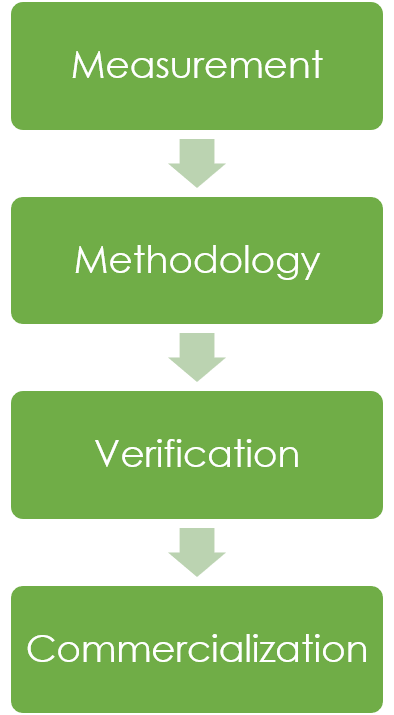
The agricultural carbon credit mechanism allows a farmer to be paid for additional CO2 captured and stored in her agricultural soil. In this mechanism, a buyer of carbon credit such as a company trying to off-set its emissions is paying the farmer for undertaking land use changes, such as: reducing tillage and keeping the ground covered 365 days/year. Those changes result in additional carbon being captured and stored in the agricultural soil for which the farmer is being paid. European Carbon Farmers is in the centre of this process and is enabling this.

Below we elaborate on each of the four stages enabling the flow of money to the farmer for additional carbon sequestration on an annual basis..
Measurement
Measurement of carbon sequestration will be undertaken using The Cool Farm Tool. If needed, the assessment can be enhanced by in-field soil organic carbon measurements.
Methodology
Measurement of carbon sequestration at the assessment site has to be assessed by a specific GHG emissions reduction methodology. The four most commonly used methodologies for this activity are:
Verification
Upon calculating additional carbon sequestration at the assessment site, the calculations have to be independently verified by an external certifier. Examples of independent certifiers include:
When the assessment is verified by an external verifier a financial instrument is being created: voluntary carbon credit, which is equal to 1 t/CO2e.
Commercialization
The last stage in the monetization of agricultural carbon credit is transacting with a buyer in the voluntary market. In such a transaction buyer is paying farmers for efforts – such as limiting tillage on her farm and/or keeping the soil covered 365 days/year by planting convert crops – in capturing and storing additional carbon in her farm’s soils.





